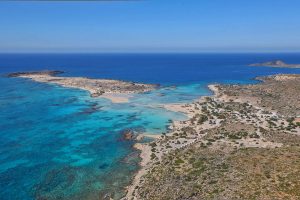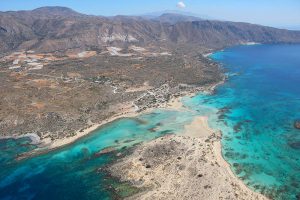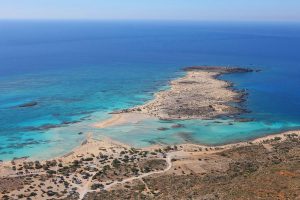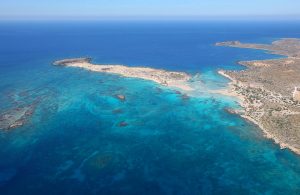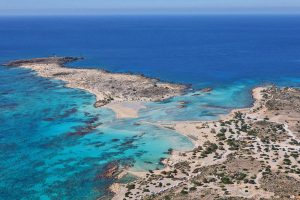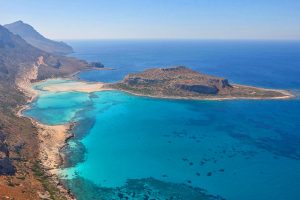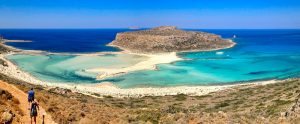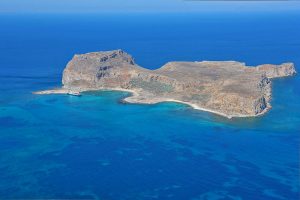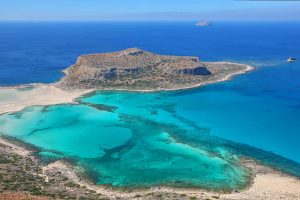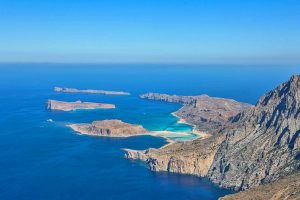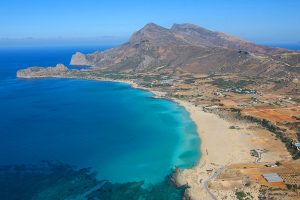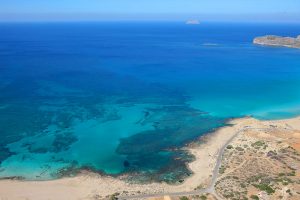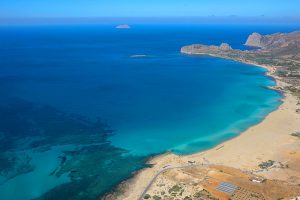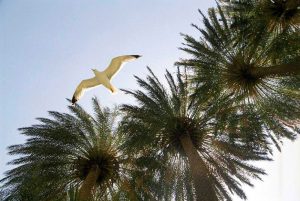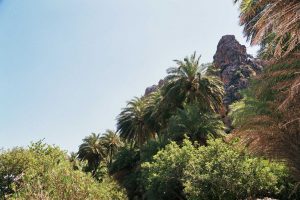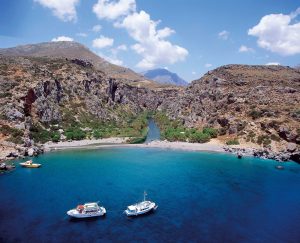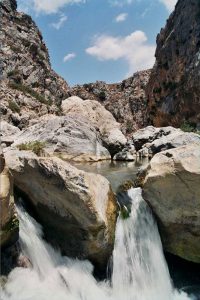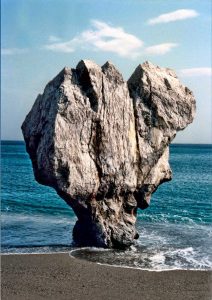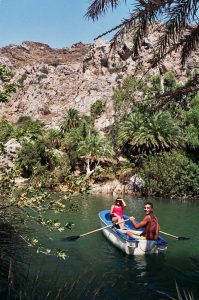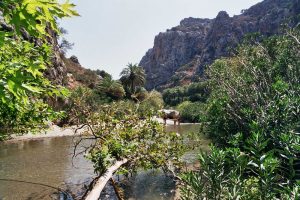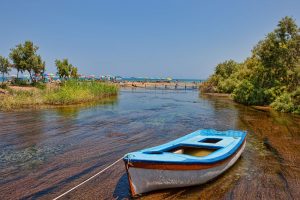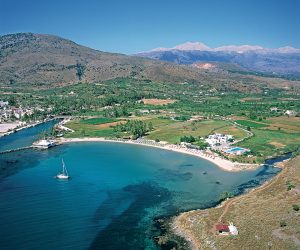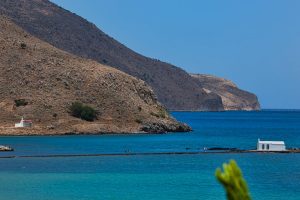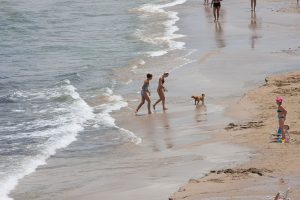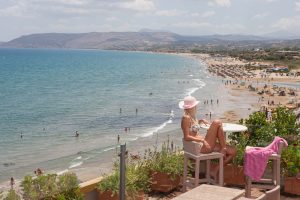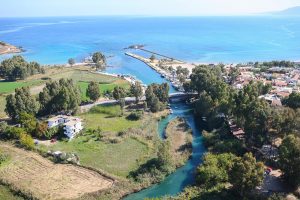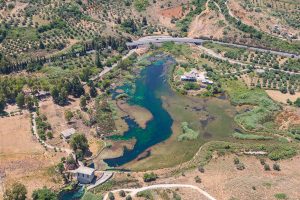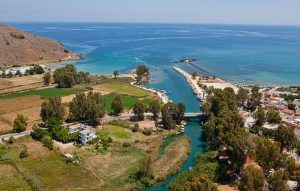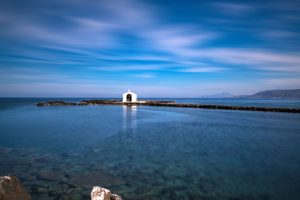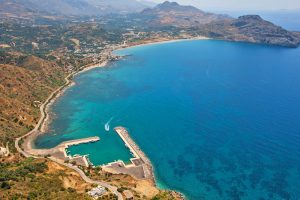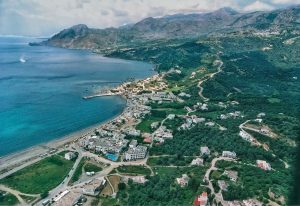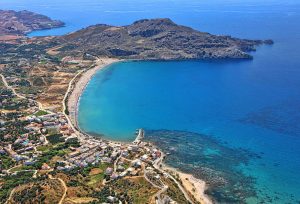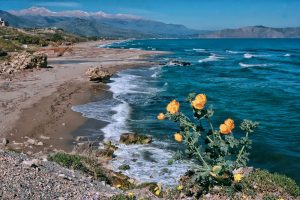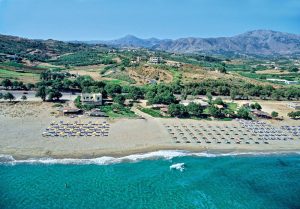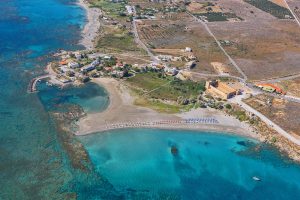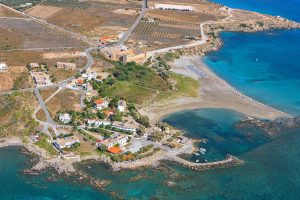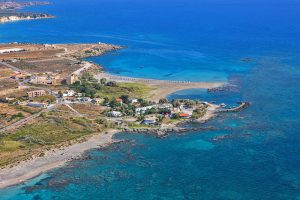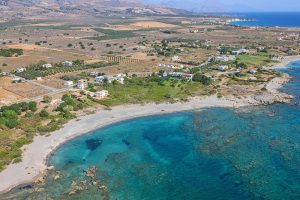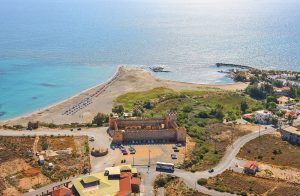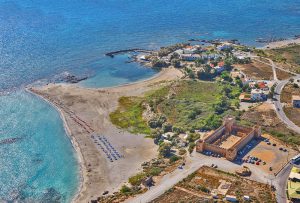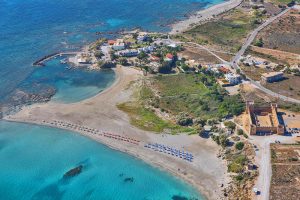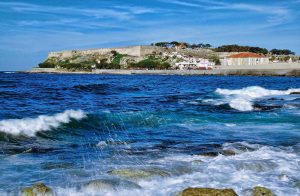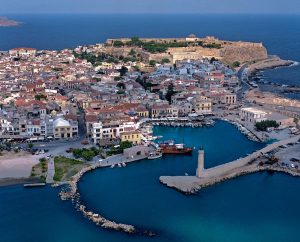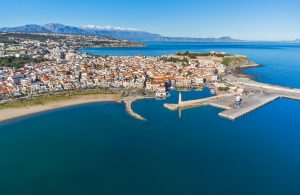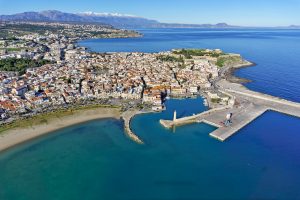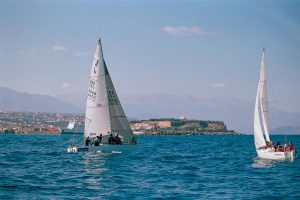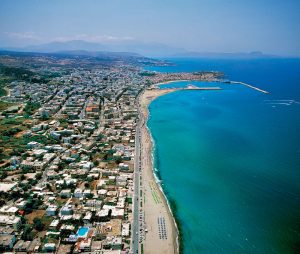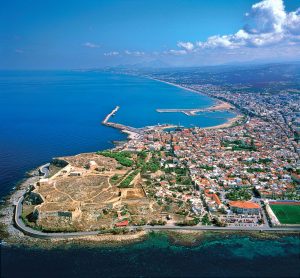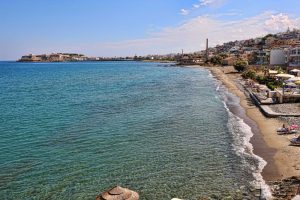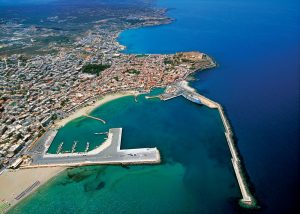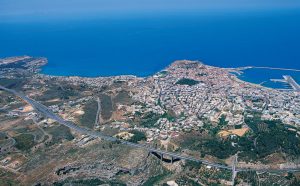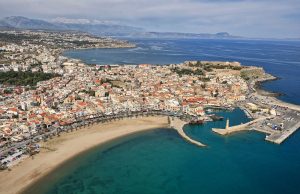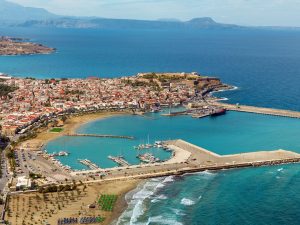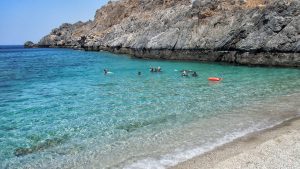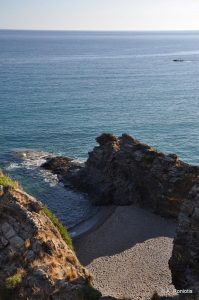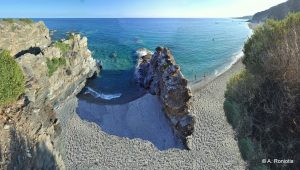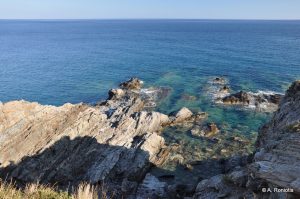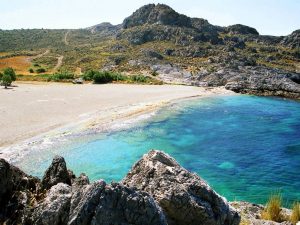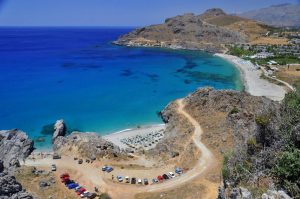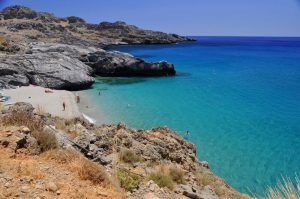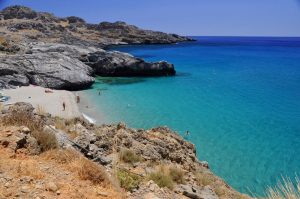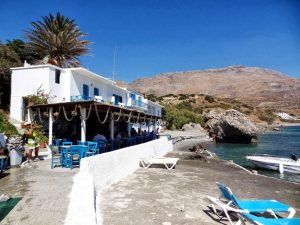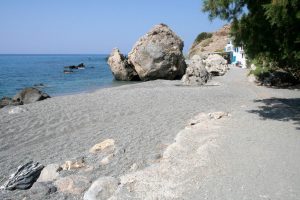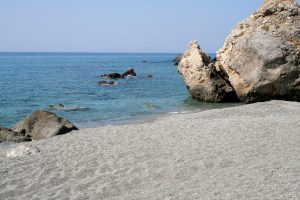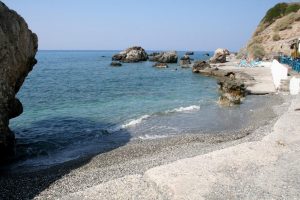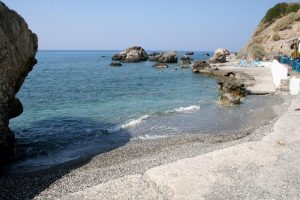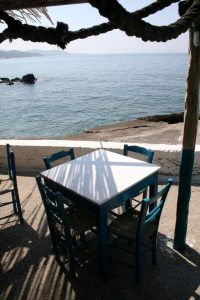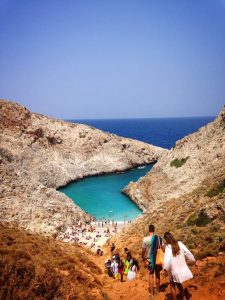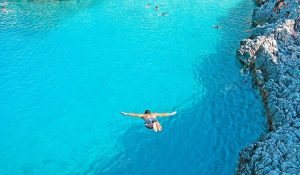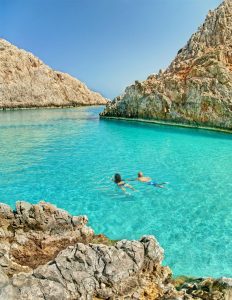Elafonisi
Elafonisi is one of the most popular attractions in Crete for a good reason. Located 76km west of Chania it is a place of magnificent beauty and majestic scenery of turquoise waters, sand dunes covered with sand lilies. The name means “Deer Island” but in fact the Elafonisi is a sandy cape that the water cuts in half, creating a sand dune island and a lagoon. The water depth is never more than 1m and it is very easy to walk to the “island”. Elafonisi is a Natura 2000 protected area.
Balos
The lagoon of Balos is visited by thousands of tourists each summer and it is famous for the turquoise waters and the exotic geological formations that seem to come from another world. It is located 56km northwest of Chania, between the cape Gramvousa and the cape Tigani and the whole area is a protected biotope. It is home to 400 species of plants, 26 of which can only be found in Crete, and 98 species of birds of which 14 are endangered and therefore protected.
Falassarna
Falassarna beach is located 59km west of Chania and in the past it had made it to several top-ten lists of European beaches. It is an exotic beachfront that consists of 5 different beaches, the most popular and largest one being Pachia Ammos that spreads 1km from one side to another. It is also the most organized one with umbrellas, snack bars, cafes and water sports. The rest of the beaches are not organized but worth your time, especially if you prefer isolation or you want to explore the caves and the archeological site at the north end of the beachfront, the ruins of the ancient city of Falassarna.
Preveli
This one is one of the most beautiful beaches of Crete, featuring a river with small waterfalls and palm trees, a must see for everyone. But this kind of astonishing natural beauty comes at a price as you can’t reach the beach by car. Once you arrive at the beach you will find a small restaurant plus some umbrellas and sun beds to rent.
Georgioupoli
Georgioupoli is a small town located 38km southeast of Chania. Its large beach is stretching for 1.5km and it is part of a 10km long beachfront extending to the east. The beach is sandy with nice clean waters and it is very well organized with umbrellas, sea beds and facilities for water sports while lifeguards operate by the sea shore.
Plakias
The Plakias beach receives a great number of visitors every year thanks to the beautiful sandy beach and the crystal clear water. The beach is well organized, there are you umbrellas and sun beds for rent plus a variety of restaurants, cafes and water sports. You can also scuba dive and check on the astonishing underwater world of the area.
Episkopi
The 3.5km wide beach is named after the nearby village and is sandy and shallow. The western part of it is well organized with a variety of shops, restaurants, taverns and bars. Coastguards are operating on the beach and you can rent umbrellas and sun beds. Those who prefer quite places and like nudism should visit the east part of this beach.
Fragkokastelo
Fragkokastelo is located 60km from Rethymno in the area of Sfakia and takes its name from the great Venetian castle that over watches the area. There is a number of beaches in the area covered in white sand and some basic tourist facilities but the most beautiful and popular is the one in front of the castle. It is a long beach with sand dunes and crystal clear, warm waters.
Rethymno
A huge, sandy beach that starts from the city of Rethymno and extends to the east for twelve kilometers. The city part of the beach is usually overcrowded but very well organized with lots of shops, restaurants, bars and water sports. On the beach there are coastguards most of the time and you can rent umbrellas and sun beds.
Schinaria
Schinaria beach (or Shinaria) is located 33km south of Rethymno, 3km south of the village Lefkogia, in the east part of the wider Plakias area. Schinaria is a small beach with soft gray-beige sand and fine pebbles, with crystal blue deep water. The seabed is rocky, but on the north part of the beach, it is sandy.
Life thrives in the area, both inside and outside of the sea. On the beach there are small ponds with fresh water that comes from springs that carry water from the mountain of Kouroupa. Around these lakes lush vegetation has been developed, reminiscent of tropical landscapes. Moreover, locals say that the life in the sea is as vivid as that on the beach. Indeed, the seabed of Schinaria is one of the richest on the island. Furthermore, water clarity is really impressive, usually exceeding 40m in horizontal direction. Indeed, it is no coincidence that most scuba diving centers in Crete have Schinaria is their program.
The beach is slightly organized, with a tavern offering a few umbrellas and refreshments; the last time we visited the beach, umbrellas and sunbeds were free if you bought refreshments. The beach can be accessed via a narrow road that starts from Lefkogia. The very narrow road that starts from Lefkogia leads to the beach after 2km. On the way to the beach, you’ll see an amazing cylindrical cave on your left hand, inside a rock.
Rodakino
The village Rodakino is located 45km southeast of Rethymno city, on the exit of the steep canyon Rodakino that runs across the mountain Kryoneritis, a few kilometers west of Plakias resort and east of Fragokastelo. This traditional village is built on both sides of the gorge, which separates it into two different settlements, namely Kato and Ano Rodakino. The village overlooks the deep blue South Cretan Sea. According to the tradition, the village’s name (means peach in Greek) is taken after a peach tree that grew here, despite the dry climate of the region. Others say that the gorge was called Rikinthos, that was later paraphrased to Rodakino.
At the exit of the torrent of the canyon, 2km south of the village, there are several beautiful and tranquil beaches. To visit them you should follow the road that leads to Korakas beach. Despite the fact that it has a long beachfront, Rodakino is not highly developed and still retains its traditional character and harmony. The first beach that you come across the exit of the dried river is Korakas (i.e. crow in Greek). It is a long beach with fine grayish pebbles and wonderfully clear waters, well organized with umbrellas, taverns. In its east end, there are cavernous rocks; locals say that before getting eroded by sea and salt they looked like a crow’s beak.
Ammoudaki
The turquoise waters and spectacular white coarse sand, make this small beach popular destination for nudists. Moreover, on the beach there is a small canteen, which also provides umbrellas and sunbeds. At the west side of the beach, you can swim till a marine cave, where the sun rays make the color of the water vivid blue. The seabed is sandy and you can walk there. At the other end, there is an underwater hole that connects Ammoudaki with Klisidi. So you can get from one beach to another only with a dive. To reach the beaches of Ammoudi on foot, you can walk east of Damnoni, till you meet Ammoudaki.
Agia Fotia, Kerames
Kerames village is located 49km south of Rethymno, close to the village Agalianos. The shore south of the village hosts many beautiful beaches, with the most famous being the beaches of Akoumiani Gialia (Ligres, Triopetra and Agios Pavlos sand hills). The beachfront north of Akoumiani Gialia is called Keramiani Gialia, meaning Kerames Beach, named after the nearby village.
The poor asphalt road that leads to Keramiani Gialia stops near the local harbor of Agia Fotini, also known as Agia Fotia. Agia Fotia has some stunning tiny pebble beaches, ideal for snorkeling and swimming. These are surrounded by towering boulders. The traditional tavern of Stavros, built on an old carob storehouse, serves fresh fish on the beach. It’s an amazing place, reminding of Greek islands of the old ’60s. The tavern offers some umbrellas and showers for free. There is a small river near Agia Fotia, which forms a small green wood. If you follow the path that heads north, along the river, you will meet an incredibly high palm tree and after 50m you will find the old church of Agia Fotini, near a small house with a nice garden. If you walk 5′ west of the tavern, along the rocky shore, you will meet another small pebbly beach.
Seitan Limania
Stefanou beach is located at the position of Seitan Limania (i.e. Satan harbor’s), 22km northeast of Chania and 2km east of the village Chordaki, at the east side of Akrotiri Cape. The wider area is named Seitan Limania, after the wild landscape, the steep cliffs and the strong sea streams which are considered dangerous. Here are situated three parallel narrow coves, well protected from the waves.
In the northern cove a tiny fantastic beach is shaped, with deep azure waters, namely the beach of Stefanou. The beach has fine pebbles and sand, transferred there from the nearby quarry through the canyon Diplohahalo. On the right and the left sides of the cove, huge marble rocks are standing high to protect the beach from the bad weather. The fame of the beach has faced a rapid increase since 2010, some years after the asphalt road reached the place; the beach is crowded in during peak season. There is a narrow steep path starting from the parking place and leading to the beach, so make sure you wear sneakers.


